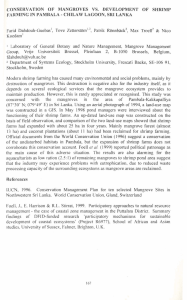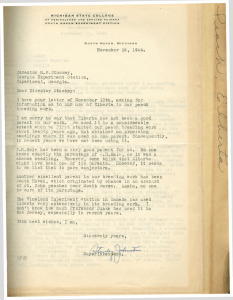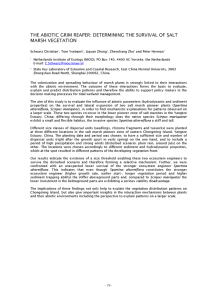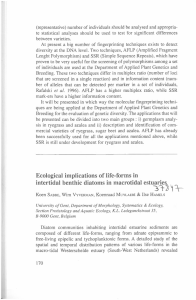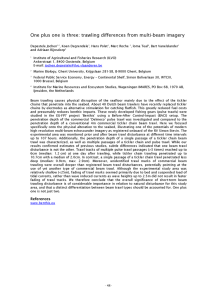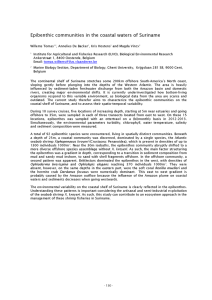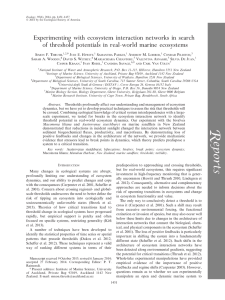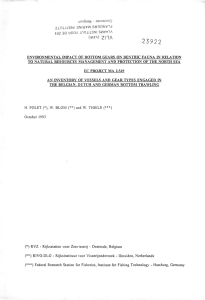Electrical tra w lin g fo r ... nurseries and spawning areas?
advertisement
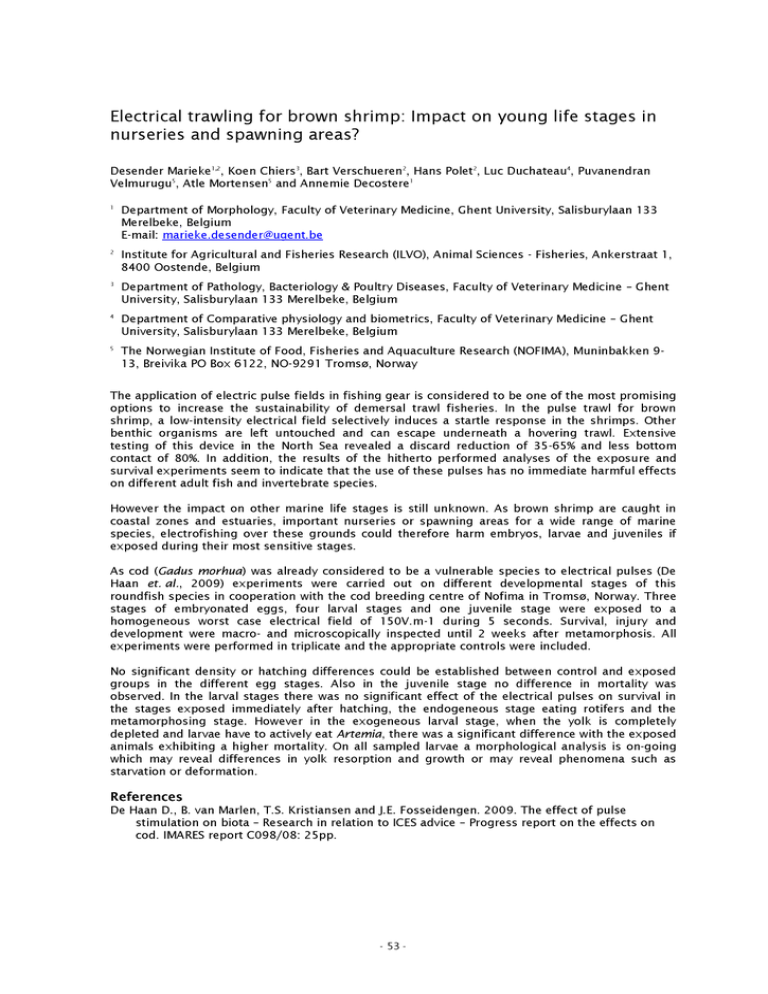
Electrical traw lin g fo r brown shrim p: Impact on young life stages in nurseries and spawning areas? Desender M a rie ke '2, Koen C hiers3, Bart Verschueren2, Hans Polet2, Luc Duchateau4, Puvanendran V e lm urugu3, Atle M ortensen5 and Annem ie Decostere1 1 D epartm ent o f M orphology, Faculty o f V eterinary Medicine, Ghent University, Salisburylaan IBB Merelbeke, Belgium E-mail: marieke.desender@ uqent.be 2 Institute fo r A g ricu ltu ra l and Fisheries Research (ILVO), Anim al Sciences - Fisheries, A nkerstraat 1, 8400 Oostende, Belgium 3 D epartm ent o f Pathology, Bacteriology & Poultry Diseases, Faculty o f Veterinary Medicine - Ghent University, Salisburylaan 133 Merelbeke, Belgium 4 D epartm ent o f Com parative physiology and biom etrics, Faculty o f V eterinary Medicine - Ghent University, Salisburylaan 133 Merelbeke, Belgium 3 The Norwegian Institute o f Food, Fisheries and A quaculture Research (NOFIMA), M uninbakken 913, Breivika PO Box 6122, NO-9291 Trom so, Norway The application o f electric pulse fields in fish in g gear is considered to be one o f the m ost prom ising o ptions to increase the su stain ab ility o f dem ersal traw l fisheries. In the pulse traw l fo r brown shrim p, a low -in te nsity electrical field selectively induces a startle response in the shrim ps. Other benthic organism s are left untouched and can escape underneath a hovering traw l. Extensive testing o f th is device in the North Sea revealed a discard reduction o f 35-65% and less bottom contact o f 80%. In a dd itio n, the results o f the h ithe rto perform ed analyses o f the exposure and survival experim ents seem to indicate th a t the use o f these pulses has no im m ediate harm ful effects on d iffe re n t a du lt fish and invertebrate species. However the im pact on o the r marine life stages is still unknow n. As brown shrim p are caught in coastal zones and estuaries, im p o rta n t nurseries or spawning areas fo r a wide range o f marine species, e le ctrofish ing over these grounds could therefore harm embryos, larvae and juve niles if exposed during th e ir m ost sensitive stages. As cod (Cadus m orhua) was already considered to be a vulnerable species to electrical pulses (De Haan et. al., 2009) experim ents were carried o ut on d iffe re n t developm ental stages o f this roundfish species in cooperation w ith the cod breeding centre o f Nofim a in Trom so, Norway. Three stages o f em bryonated eggs, fo u r larval stages and one juvenile stage were exposed to a hom ogeneous w orst case electrical field o f 150V .m -l d urin g 5 seconds. Survival, in ju ry and developm ent were macro- and m icroscopically inspected until 2 weeks after m etam orphosis. All experim ents were perform ed in trip lica te and the appropriate controls were included. No sign ifican t density or hatching differences could be established between co ntrol and exposed groups in the d iffe re n t egg stages. Also in the juve nile stage no difference in m o rta lity was observed. In the larval stages there was no sign ifican t effect o f the electrical pulses on survival in the stages exposed im m ediately after hatching, the endogeneous stage eating rotife rs and the m etam orphosing stage. However in the exogeneous larval stage, when the yo lk is com pletely depleted and larvae have to actively eat A rtem ia, there was a sign ifican t difference w ith the exposed animals e xh ib itin g a higher m ortality. On all sampled larvae a m orphological analysis is on-going which may reveal differences in yo lk resorption and grow th or may reveal phenomena such as starvation or deform ation. References De Haan D., B. van Marlen, T.S. Kristiansen and J.E. Fosseidengen. 2009. The effect o f pulse stim ulatio n on biota - Research in relation to ICES advice - Progress report on the effects on cod. IMARES report C 09 8/08 : 25pp. - 53 -
